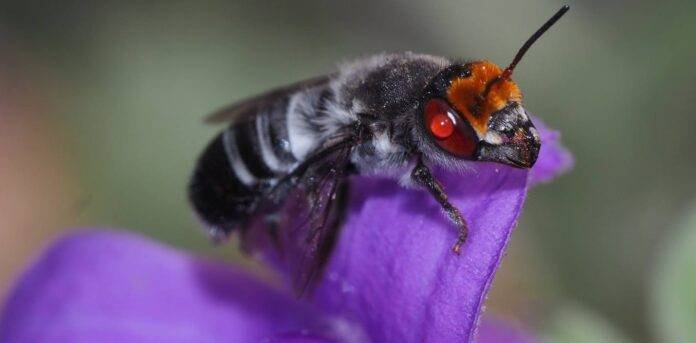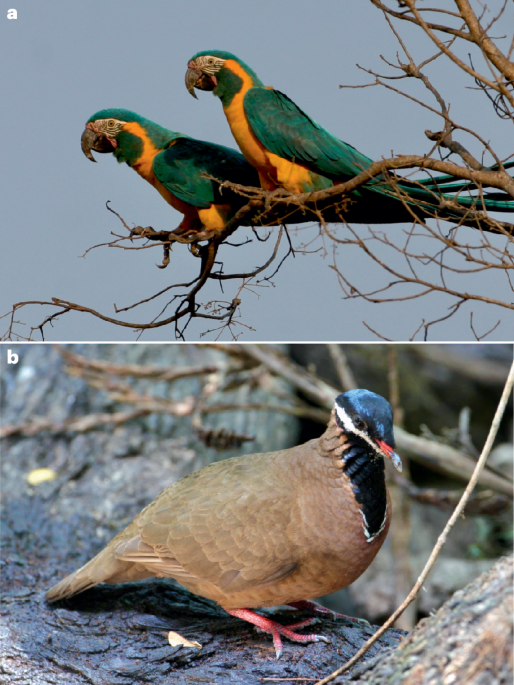Cunningham, S. C. et al. Balancing the environmental benefits of reforestation of reforestation in agricultural regions. Perspect. Plant. Ecol. Evol. 17, 301–317. https://doi.org/10.1016/j.ppees.2015.06.001 (2015).
Al-Sherif, E. A. & Fadl, M. A. Floristic study of the Al-Shafa highlands in Taif, Western Saudi Arabia. Flora 225, 20–29. https://doi.org/10.1016/j.flora.2016.09.004 (2016).
Abdel Khalik, K., El-Sheikh, M. & El-Aidarous, A. Floristic diversity and vegetation analysis of Wadi al Noman, holy Mecca, Saudi Arabia. Turk. J. Bot. 37, 894–907. https://doi.org/10.3906/bot-1209-56 (2013).
Fadl, M. A., Al-Yasi, H. M. & Alsherif, E. A. Impact of elevation and slope aspect on floristic composition in Wadi Elkor, Sarawat mountain, Saudi Arabia. Sci. Rep. 11, 16160. https://doi.org/10.1038/s41598-021-95450-4 (2021).
Al-Sherif, E. A., Ayesh, A. M. & Rawi, S. M. Floristic composition, life form and chorology of plant life at Khulais region Western Saudi Arabia. Pak J. Bot. 45, 29–38 (2013).
Mossa, J. S., Al-Yahya, M. A. & Al-Meshal, I. A. Medicinal Plants of Saudi Arabia (King Saud University, 1987).
Osman, A. K., Al-Ghamdi, F. & Bawadekji, A. Floristic diversity and vegetation analysis of Wadi Arar: a typical desert Wadi of the Northern border region of Saudi Arabia. Saudi J. Biol. Sci. 21, 554–565. https://doi.org/10.1016/j.sjbs.2014.02.001 (2014).
Körner, C. Why are there global gradients in species richness? Mountains might hold the answer. Trends Ecol. Evol. 15, 513–514. https://doi.org/10.1016/S01695347(00)02004-8 (2000).
Cano-Ortiz, A., Musarella, C. M., PiNar Fuentes, J. C., Gomes, C. J. P. & Cano, E. Distribution patterns of endemic flora to define hotspots on Hispaniola. Syst. Biodivers. 14, 261–275. https://doi.org/10.1080/14772000.2015.1135195 (2016).
Heywood, V., Casas, A., Ford-Lloyd, B., Kell, S. & Maxted, N. Conservation and sustainable use of crop wild relatives. Agric. Ecosyst. Environ. 121, 245–255. https://doi.org/10.1016/j.agee.2006.12.014 (2007).
Sheehy, J. E., Elmido, A., Centeno, C. & Pablico, P. Searching for new plants for climate change. J. Agric. Met. 60, 463–468 (2005).
Jarvis, A., Lane, A. & Hijmans, R. J. The effect of climate change on crop wild relatives. Agric. Ecosyst. Environ. 126, 13–23. https://doi.org/10.1016/j.agee.2008.01.013 (2008).
Khoury, C. K. et al. Increasing homogeneity in global food supplies and the implications for food security. Proc. Natl Acad. Sci. USA 111, 4001–4006 (2014).
Tilman, D. & Clark, M. Global diets link environmental sustainability and human health. Nature 515, 518–522 (2014).
Ady, J. The Taif escarpment, Saudi Arabia: a study for nature conservation and recreational development. Mt. Res. Dev. 15(2), 101–120. https://doi.org/10.2307/3673875 (1995).
Chaudhary, S. Flora of the Kingdom of Saudi Arabia (Ministry of Agriculture and Water, 2001).
Collenette, S. Wild Flowers of Saudi Arabia (National Commission for Wildlife Conservation and Development, 1999).
Raunkiaer, C. Statistik der lebensformen Als grundlage für die biologische pflanzengeographie. Beih Bot. Centralbl. 27, 171–206 (1910).
Wickens, G. E. The Flora of Jebel Morra (Sudan Republic) and its Geographical Affinities (Kew Bulletin Additional Series V (HMSO, 1976).
Zohary, M. Geobotanical Foundations of the Middle East Vol. 2 (GustavFischer, 1973).
Food and Agriculture Organization of the United Nations (FAO). The Second Global Plan of Action for Plant Genetic Resources for Food and Agriculture (Food and Agriculture Organization of the United Nations, 2001).
Tanji, K. K. & Kielen, N. C. Agricultural Drainage Water Management in Arid and Semi-Arid Areas. Corpus ID: 129929404 (2002).
Ward, J. H. Hierarchical grouping to optimize an objective function. Am. Stat. Assoc. J. 58, 236–244 (1963).
Magurran, A. E. Ecological Diversity and its Measurements (Princeton University Press, 1988).
Ezzat, S. M., Abdel-Sattar, E., Harraz, F. M. & Ghareib, S. A. Antihyperglycemic And antihyperlipidemic effects of the methanol extracts of Cleome Ramosissima parl., Barleria Bispinosa (Forssk.) Vahl. And Tribulus macropterus Boiss. Bull. Fac. Pharm. Cairo Univ. 52, 1–7 (2014).
Vijayalakshmi, S. & Kripa, K. G. Therapeutic uses of plant of genus Blepharis- A systematic review. Int. J. Pharm. Biol. Sci. 7(4), 236–243 (2016).
Vanessa Yardley, F. & Gamarro, S. L. Croft: Study of the in vitro antiplasmodial, antileishmanial and antitrypanosomal activities of medicinal plants from Saudi Arabia. Molecules 17(10), 11379–11390 (2007).
Asante-Kwatia, E. et al. A study on Justicia Flava (Forssk.) Vahl.: pharmacognostic characterization and antiplasmodial and Anti-Inflammatory properties of the leaves. Sci. World J. 9133288, 12. https://doi.org/10.1155/2023/9133288 (2023).
Yonbawi, A. R., Abdallah, H. M., Alkhilaiwi, F. A., Koshak, A. E. & Heard, C. M. Anti-Proliferative, cytotoxic and antioxidant properties of the methanolic extracts of five Saudi Arabian flora with folkloric medicinal use: Aizoon Canariense, Citrullus colocynthis, Maerua crassifolia, rhazya stricta and Tribulus macropterus. Plants 2021(10), 2073. https://doi.org/10.3390/plants10102073 (2021).
El-Ghazali, G. E., Al-Khalifa, K. S., Saleem, G. A. & Abdallah, E. M. Traditional medicinal plants Indigenous to Al-Rass Province, Saudi Arabia. J. Med. Plants Res. 4(24), 2680–2683 (2010).
Mossa, J. S., Al-Yahya, M. A. & Al-Meshal, I. A. Medicinal Plants of Saudi Arabia (King Saud University, 2000).
El-Mokasabi, F. M., Al-Sanousi, M. F. & El-Mabrouk, R. M. Taxonomy and ethnobotany of medicinal plants in Eastern region of Libya. J. Environ. Sci. Toxicol. Food Technol. 12, 14–23 (2018).
Naidu, P. P., Madakka, M. & Rajesh, B. Pupalia Lappacea Juss [L]: A review of phytochemistry and therapeutic application. Asian J. Pharm. Clin. Res. 7(Suppl 1), 15–18 (2014).
Alqasoumi, S., Galal, A., Alyahya, M. & Rafatullah, S. Antinociceptive ant-iinflammatory and antipyretic effects of a flavonoidal mixture leaf surface of Rhus retinorrhaea. FARMACIA 57(3), 346–354 (2009).
Miski, M. Fercoperol, an unusual cyclic-endoperoxynerolidol derivative from Ferula Communis subsp. Communis. J. Nat. Prod. 49, 916–918 (1986).
Kwon, Y. S. et al. Antimicrobial constituents of Foeniculum vulgare. Arch. Pharm. Res. 25(2), 154–157 (2002).
Sabra, R. T. et al. Russelioside A, a pregnane glycoside from Caralluma tuberculate, inhibits Cell-Intrinsic NF-κB activity and metastatic ability of breast Cancer cells. Biol. Pharm. Bull. 45, 1564–1157 (2022).
Kumaraswamy, Y., Cox, P. J., Jaspars, M., Nahar, L. & Sarker, S. D. Screening seeds of Scottish plants for antibacterial activity. J. Ethnopharmacol. 83, 73–77 (2002).
Mansoor, A., Ibrahim, M. A., Mudassir Asrar Zaidi, M. A. & Ahmed, M. Antiprotozoal activities of Vincetoxicum Stocksii and Carum copticum. Bangladesh J. Pharmacol. 6, 51–54 (2011).
Burkill, H. The Useful Plants of West Tropical Africa, Vol. 1, Families A-D 2nd edn (Royal Bot Gardens, 1985).
Akbar, S. & Al-Yahya, M. A. Screening of Saudi plants for phytoconstituents, Pharmacological and antimicrobial properties. Australian J. Med. Herbal. 23(2) (2011).
Gnanamuthu, G. & Jeevitha, M. Medicinal value of bioactive compounds in the (Aristolochia bracteolata) leaves extract using GC-MS. World J. Med. Sci. 18(4), 130–145 (2021).
Khalil, H. E., Aldakheel, T. S., AlAhmed, A., Emeka, P. M. & Kandeel, M. Anti-proliferative activity of leaves of Launaea capitata Asteraceae. Phytochemical, cytotoxicity and in Silico studies. Trop. J. Pharm. Res. 19(10), 2129–2136 (2020).
Belboukhari, N. & Cheriti, A. Ethnomedical and antimicrobial studies of Launaea nudicaulis. EJEAFChe 7(14), 2749–2753 (2008).
Ahmed, A. A., Howladar, S. M., Mohamed, H. A. & Sami Asir Al-Robai, S. A. Phytochemistry, antimicrobial, antigiardial and antiamoebic activities of selected plants from Albaha area, Saudi Arabia. J. Adv. Med. Med. Res. 18(11), 1–8. https://doi.org/10.9734/BJMMR/2016/29803 (2016).
Safaei-Ghomi, J., Bamoniri, A. & Hatami, A. Composition of the essential oil of the flowering aerial parts of Iranian Crambe orientalis L. J. Essent. Oil Res. 19, 348–350 (2007).
Paerkh, J. & Chanda, S. In vitro antifungal activity of methanol extracts of some Indian medicinal plants against pathogenic yeast and moulds. Afr. J. Biotechnol. 7, 4349–4353 (2008).
Al-Shanwani, M. Plants Used in Saudi Folk Medicine (King Abdul Aziz City for Science and Technology, 1996).
Batanouny, K. H. Wild Medicinal Plants in Egypt (Palm, 1999).
Mahmoud, T. & Gairola, S. Traditional knowledge and use of medicinal plants in the Eastern desert of Egypt: a case study from Wadi El-Gemal Eastern desert of Egypt: a case study from Wadi El-Gemal National park. J. Med. Plants Stud. 1(6), 10–17 (2103).
Saganuwan, A. S. Some medicinal plants of Arabian pennisula. J. Med. Plants Rese. 4(9), 766–788 (2010).
Alamri, S. A. & Moustafa, M. F. Antimicrobial properties of 3 medicinal plants from Saudi Arabia against some clinical isolates of bacteria. Saudi Med. J. 33(3), 272–277 (2012).
Al-Nafie, A. H. Phytogeography of Saudi Arabia. Saudi J. Biol. Sci. 15(1), 159–176 (2008).
Feng, J., Hu, X., Wang, J. & Wan, Y. Support for the elevational Rapoport’s rule among seed plants in Nepal depends on biogeographical affinities and boundary effects. Ecol. Evol. 6(20), 7246–7252. https://doi.org/10.1002/ece3.2473 (2016).
Rapoport, E. H. Areography: Geographic Strategies of the Species(Economic Culture Fund, 1975).
Körner, C. et al. Creative use of mountain biodiversity database: the Kazbegi research agenda of GMBA-DIVERSITAS. Mt. Res. Dev. 27, 276–281. https://doi.org/10.1659/mrd.0880 (2007).
White, F. & Leonard, J. Phytogeographical links between Africa and Southwest Asia. Selected contributions to the flora and vegetation of the East. Proceedings of the Third Plant Life of Southwest Asia Symposium 229–246. https://eurekamag.com/research/002/458/002458102.php(2008).
Cain, S. A. & Castro, M. O. Manual of Vegetation Analysis (Harper Brothers, 1959).
Pavón, N. P., Hernández-Trejo, H. & Rico-Gray, V. Distribution of plant lifeforms along an altitudinal gradient in the semi-arid Valley of Zapotitlón. Mexico J. Veg. Sci. 11, 39–42. https://doi.org/10.2307/3236773 (2000).
Kutiel, P. & Lavee, H. Efffect of slope aspect on soil and vegetation properties along an aridity transect. Isr. J. Plant. Sci. 47, 169. https://doi.org/10.1080/07929978.1999.10676770 (1999).
Colwell, R. K. & Hurtt, G. C. Nonbiological gradients in species richness and a spurious Rapoport effect. Am. Nat. 144, 570595. https://doi.org/10.1086/285695 (1994).
Dickoré, W. B. & Nüsser, M. Flora of Nanga Parbat (NW Himalaya, Pakistan). An Annotated Inventory of Vascular Plants with Remarks on Vegetation Dynamics. Berlin: Botanischer Garten und Botanisches Museum Berlin- Dahlem (2000). (Englera 19). https://doi.org/10.2307/3776769.
Irl, S. D. H. et al. An Island view of endemic rarity – Environmental drivers and consequences for nature conservation. Divers. Distrib. 23, 1132–1142. https://doi.org/10.1111/ddi.12605 (2017).
Carlsson, B. A., Karlsson, P. S. & Svensson, B. M. Alpine and subalpine vegetation. In: [Rydin, Snoeijs & Diekmann], Swedish Plant Geography. Svenska växtgeografiska sällskapet 75–89 (1999).
Badano, E. I., Cavieres, L. A., Molina-Montenegro, M. A. & Quiroz, C. L. Slope aspect influences plant association patterns in the mediterranean matorral of central Chile. J. Arid Environ. 62, 93–108. https://doi.org/10.1016/j.jaridenv.2004.10.012 (2005).
Zapata-Rios, X., Brooks, P. D., Troch, P. A., McIntosh, J. & Guo, Q. Influence of terrain aspect on water partitioning, vegetation structure and vegetation greening in high-elevation catchments in Northern new Mexico. Ecohydrology 9, 782–795. https://doi.org/10.1002/eco.1674 (2016).
Sternberg, M. & Shoshany, M. Influence of slope aspect on mediterranean Woody formations: comparison of a semiarid and an arid site in Israel. Ecol. Res. 16, 335–345. https://doi.org/10.1046/j.1440-1703.2001.00393.x (2001).
Huebner, C. D., Randolph, J. C. & Parker, G. R. Environ mental factors affecting understory diversity in second-growth deciduous forests. Am. Midl. Nat. 134, 155–165 (1995).
Måren, I. E., Karki, S., Prajapati, C., Yadav, R. K. & Shrestha, B. B. Facing North or South: does slope aspect impact forest stand characteristics and soil properties in a semiarid trans-Himalayanvalley? J. Arid Environ. 121, 112–123. https://doi.org/10.1016/j. jaridenv.2015.06.004 (2015).
Boyko, H. On the role of plants as quantitative climate indicators and the geoecological law of distributions. J. Ecol. 25, 138–157 (1947).
Chaves, M. M., Maroco, J. P. & Pereira, J. S. Understanding plant responses to drought – from genes to the whole plant. Funct. Plant. Biol. 30, 239–264. https://doi.org/10.1071/FP02076 (2003).
Griffiths, H. & Males, J. Succulent plants. Curr. Biol. 27, R890–R896. https://doi.org/10.1016/j.cub.2017.03.021 (2017).
Reich, P. B., Peterson, D. W., Wedin, D. & Wrage, A. Fire and vegetation effects on productivity and nitrogen cycling across a forest grassland continuum. Ecology 82, 1703–1719 (2001).
Gur, A. & Zamir, D. Unused natural variation can lift yield barriers in plant breeding. PLoS Biol. 2, e245 (2004).
McCouch, S. R., McNally, K. L., Wang, W. & Hamilton, R. S. Genomics of gene banks: a case study in rice. Am. J. Bot. 99, 407–423 (2012).
Esquinas-Alcázar, J. Protecting crop genetic diversity for food security: political, ethical and technical challenges. Nat. Rev. Genet. 6, 946–953 (2005).






